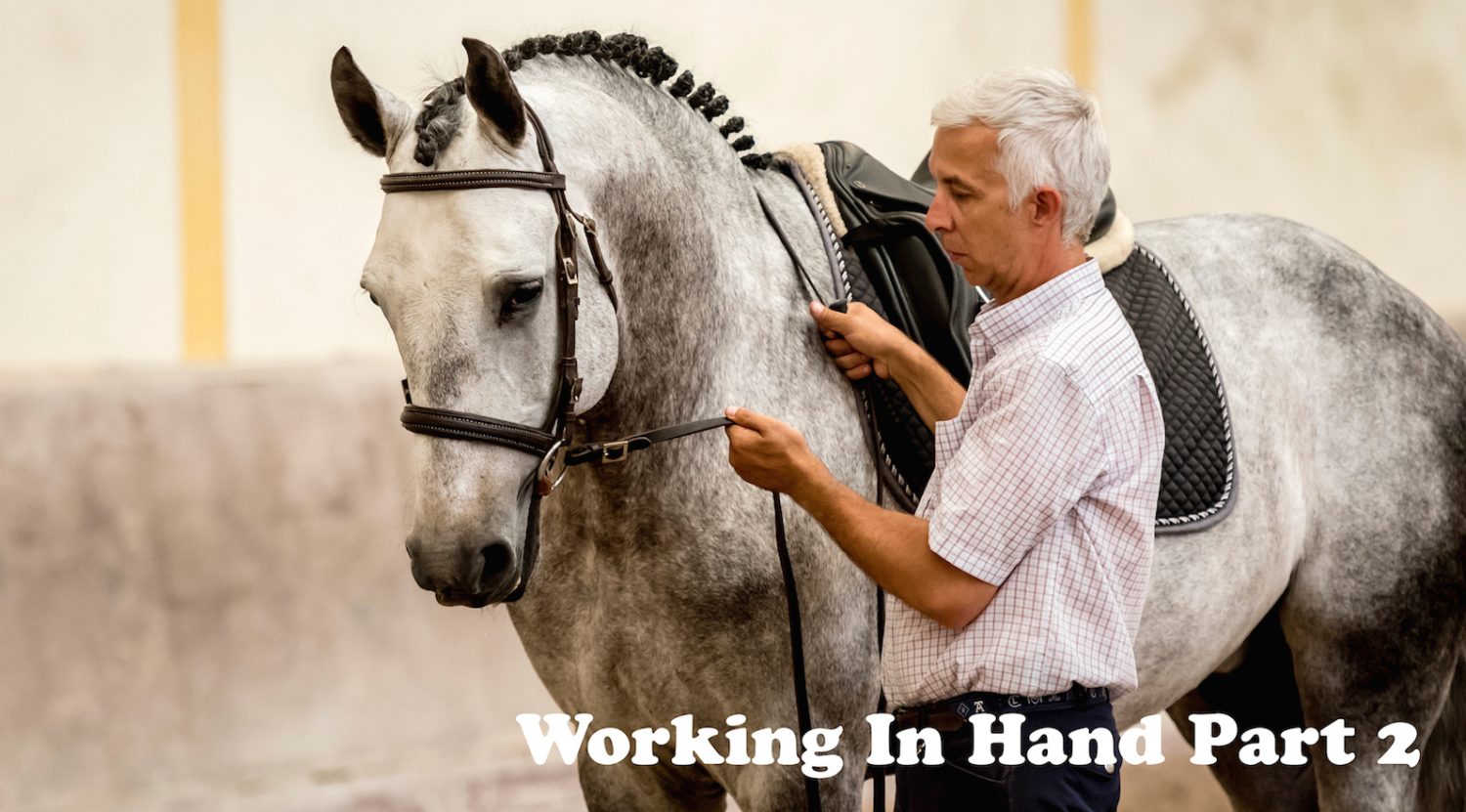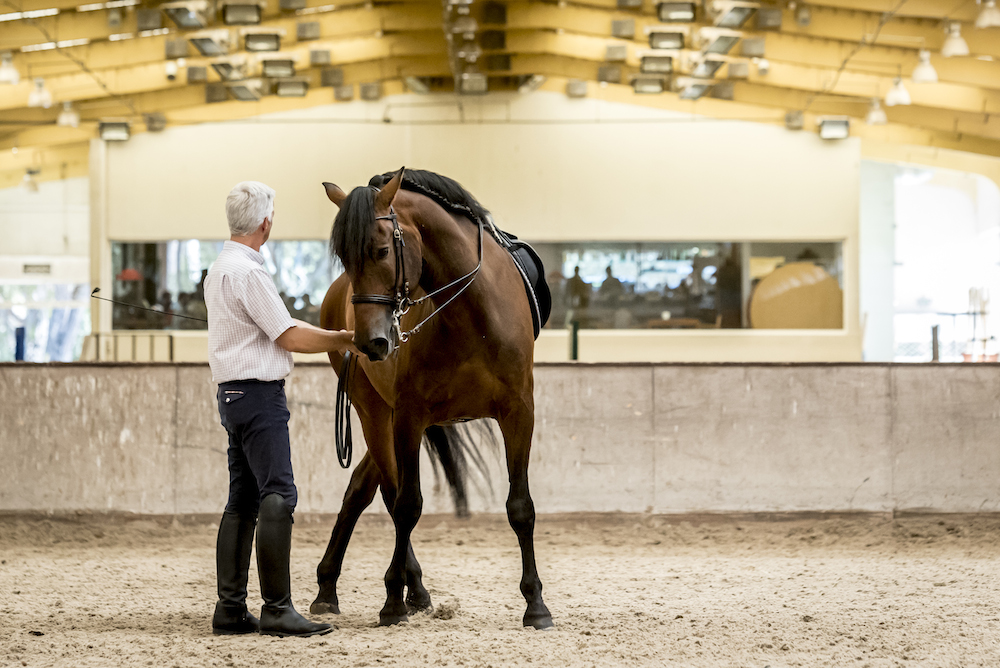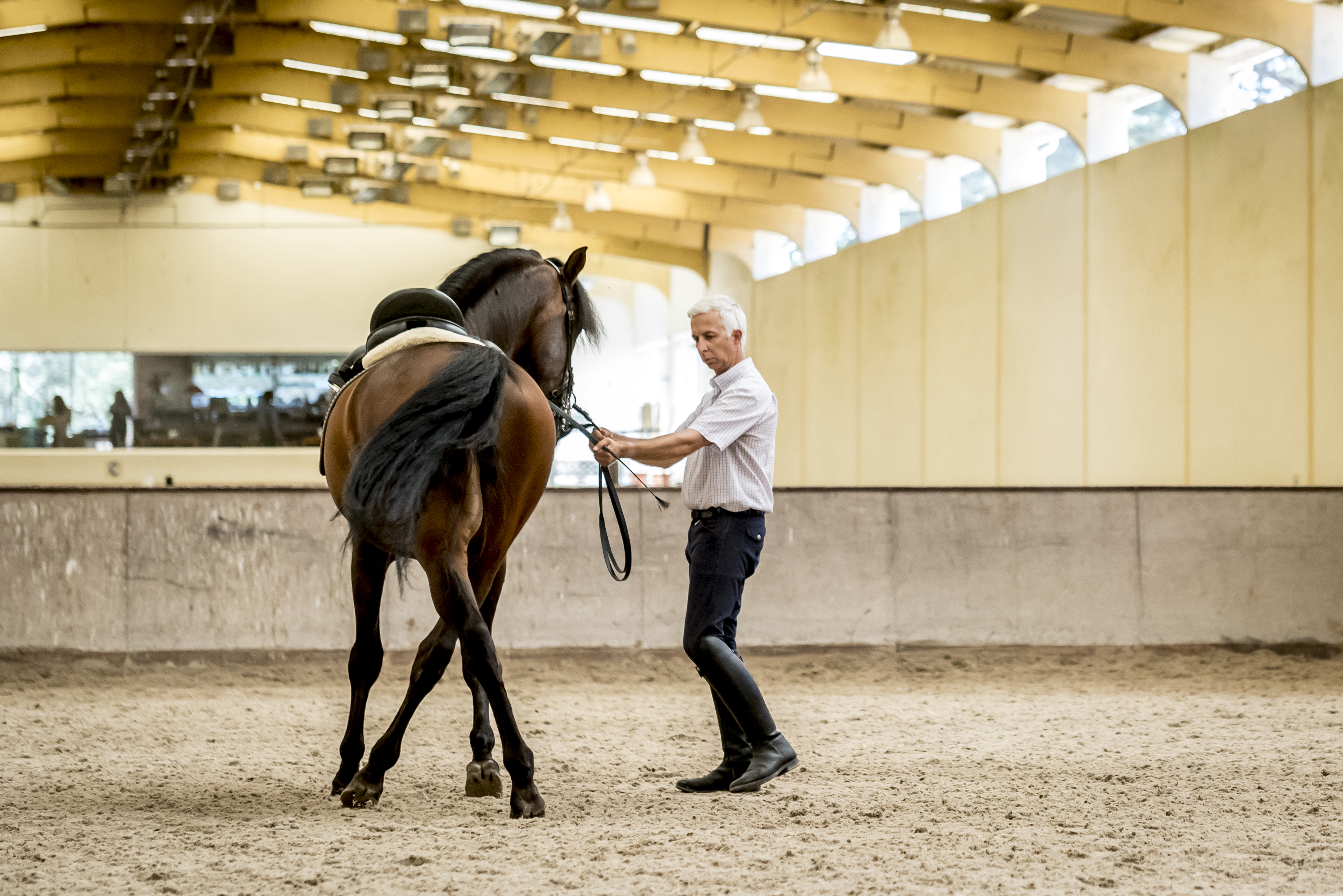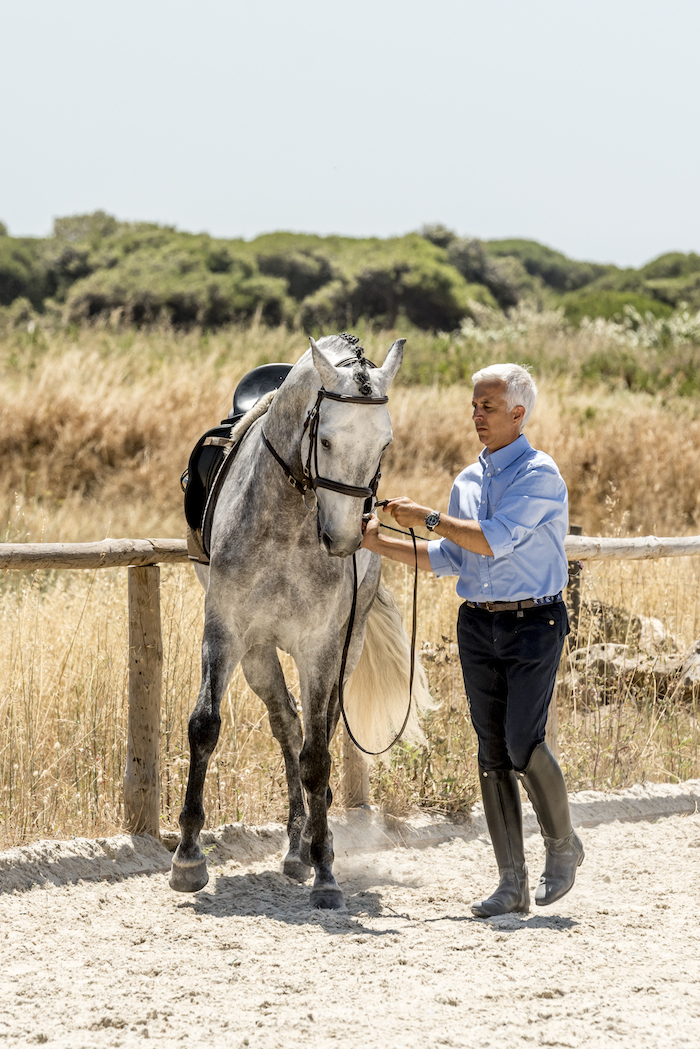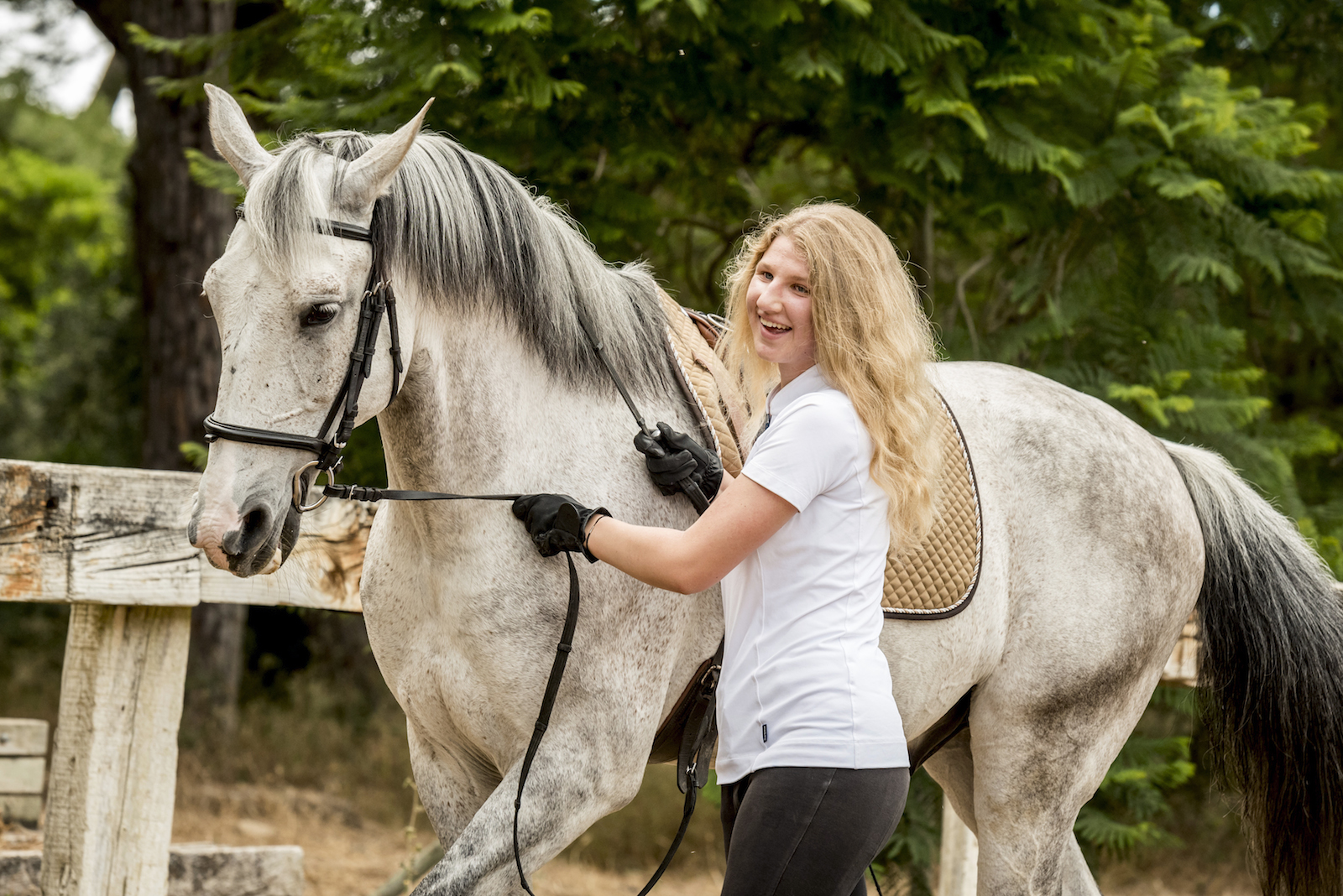In the first article Nuno showed you how to get started with your horse using a cavesson and a snaffle bridle. Teaching your horse to walk calmly alongside you, on a straight line, on a circle and standing in a square halt. Now that you have achieved this it is time to begin lateral work.
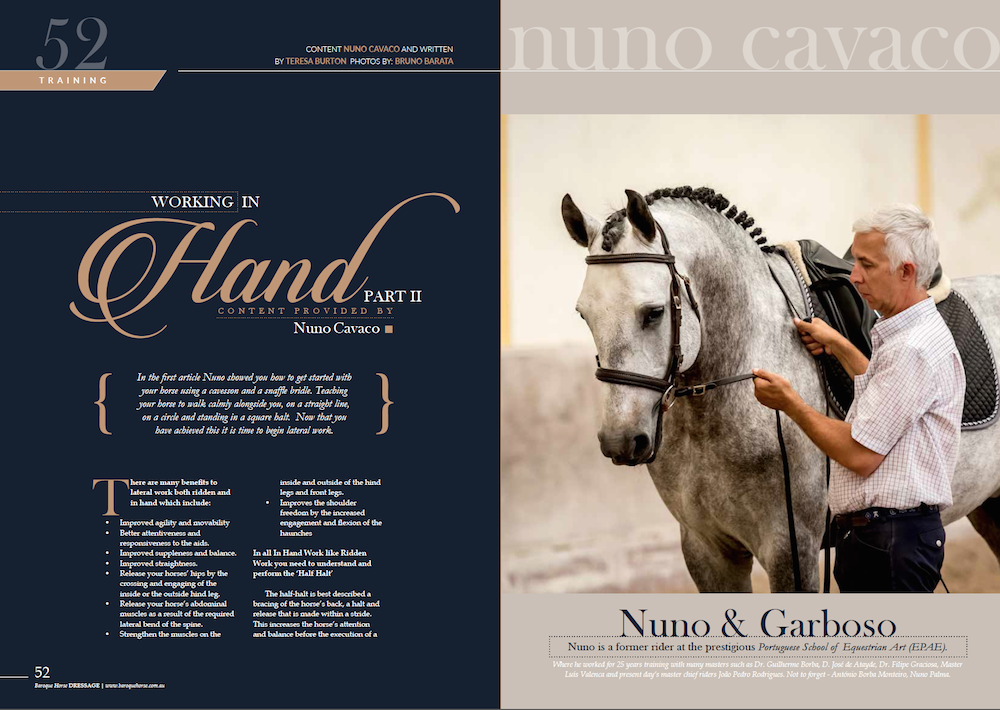
These articles are regularly published in top quality International magazines. Here you see first page in ´Baroque Dressage Horse Magazine´
There are many benefits to lateral work both ridden and in hand which include –
- Improved agility and movability
Better attentiveness and responsiveness to the aids.
Improved suppleness and balance.
Improved straightness.
Release your horses’ hips by the crossing and engaging of the inside or the outside hind leg.
Release your horse’s abdominal muscles as a result of the required lateral bend of the spine.
Strengthen the muscles on the inside and outside of the hind legs and front legs.
Improves the shoulder freedom by the increased engagement and flexion of the haunches
In all In Hand Work like Ridden Work you need to understand and perform the ‘Half Halt’
The half-halt is best described a bracing of the horse’s back, a halt and release that is made within a stride. This increases the horse’s attention and balance before the execution of a movement or transition. It checks the engagement of the hind legs and the balance on the haunches improving the lightness in the forehand and therefore the horse’s overall balance.
Nuno regularly uses a half halt when working horses in hand for instance asking for the shoulder in as the shoulders move in he half halts the horse to prevent him carrying on in a circle instead continue forward. To achieve a half halt in hand you can use the outside rein against the neck to ask for the half halt. It is a very slight movement to check your horse mid-stride.
Images – Pages 3 and 4 in Baroque Dressage Horse Magazine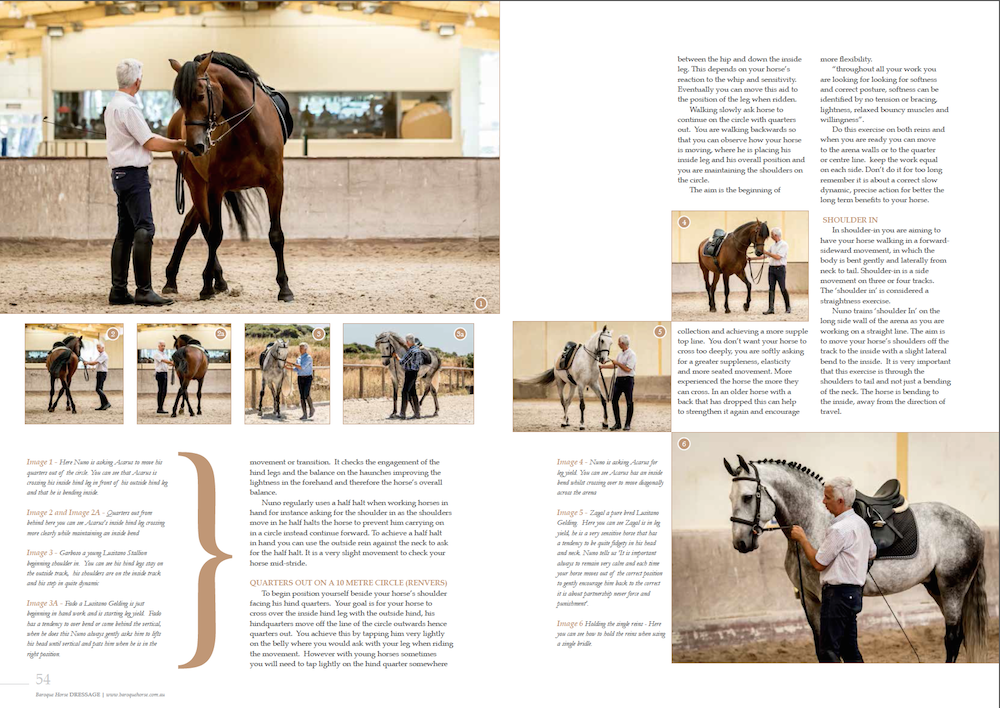
Let´s begin with quarters out on the next slide. Nuno is working with a 11 year Iberian horse Acarus.
The Leg Yield
Leg yield teaches the horse to move sidewards off the leg or whip when working in hand. The aim is to move your horse laterally staying parallel to the arena long side wall from the centre line.
To teach the leg yield you come from the short side of the arena onto the centre line positioned at your horse’s shoulder (his left shoulder if you are going right and visa a versa). You begin the leg yield as you come onto the centre line with the aim to finish on the wall at the other end of the arena on a diagonal. The movement needs to be even through head,neck and hind quarters not one leading the other basically moving parallel to the wall. Facing your horse’s shoulder you ask the horse to laterally bend his neck slightly towards you then use your whip along his side to tap behind girth where you would position your leg to ask him to begin moving laterally.
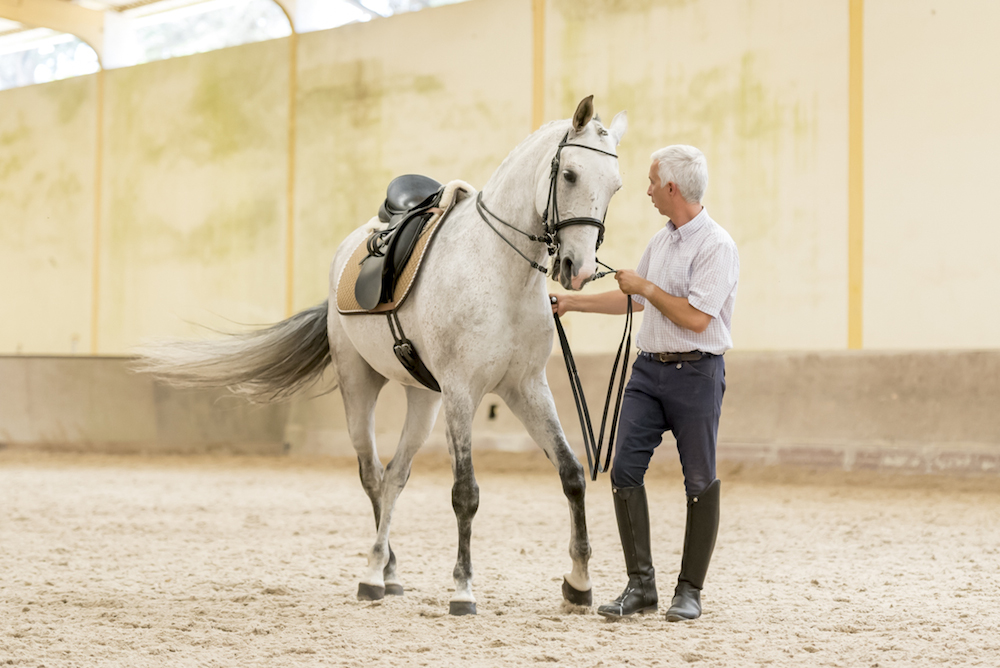
Image – Zagal performing leg yield
Keep an eye all the time on the position of his head, neck and hind quarters they must remain parallel to the wall. Do not force any movement and try and keep the neck straight out of the horse’s shoulders, look for a defined reaction of the hind leg yielding away from the whip.Perform the exercise on both reins.
Image Fado a Lusitano Gelding is just beginning in hand work and is starting leg yield. Fado has a tendency to over bend or come behind the vertical, when he does this Nuno always gently asks him to lifts his head until vertical and pats him when he is in the right position.
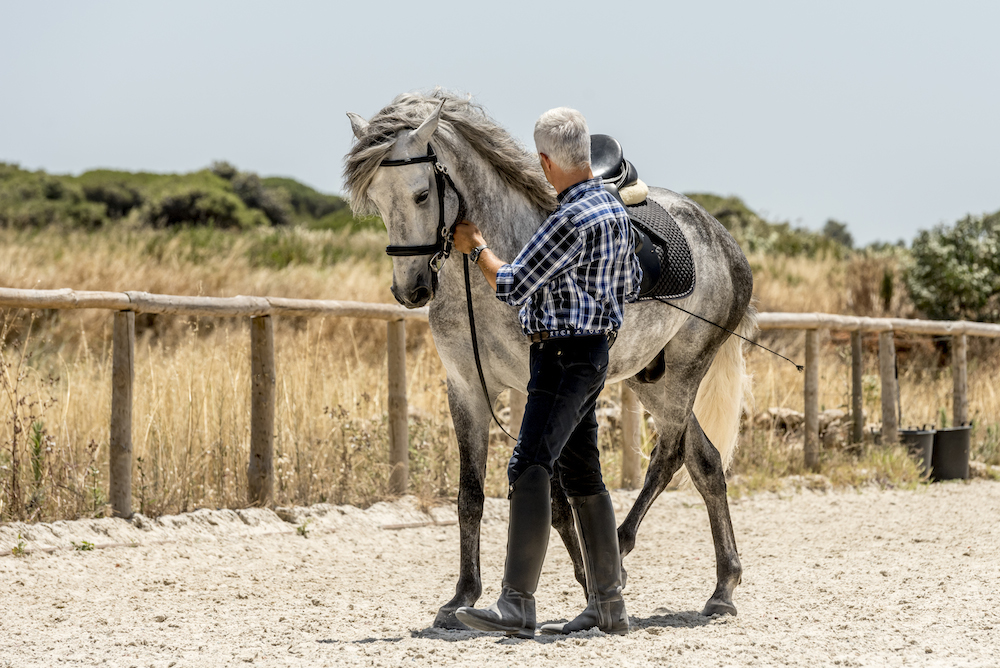
We hope that you and your horse enjoy training these exercises, performing this work every week will greatly improve you and your horse both in communication and performance. For the next addition Nuno covers Half Pass, Quarters In and rein back.
IF YOU WOULD LIKE TO TRAIN WITH NUNO
Send us an email to find out more, book a course teresa@lusitanohorsefinder.com
Testimonial by Emma 16 year rider – She joined us in Portugal to ride Classical Dressage and learn about working in hand for the first time.
I really enjoyed the In Hand work it was so interesting. Working from the ground at close quarters to the horse I found I really saw and experienced the reaction from the horse to my every move, even the slightest movement of the reins. Also how they reacted to the touch of the whip in different places. It has really made me aware of how careful and precise you have to be when using your aids to achieve the correct response from the horse. This is directly related to my riding. Thank you for a great week!
Image of Emma and Zagal by Bruno Barata
